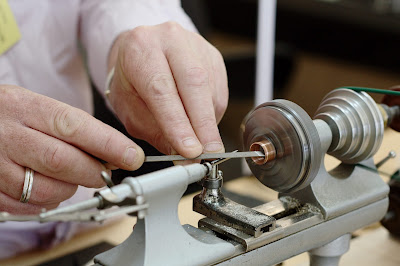Hello!
How are you? Today we'll look at some important discoveries and inventions of the Industrial Revolution (産業革命の発見、発明).
The picture above is of the Crystal Palace. This was a famous exhibition in London in the 19th century to show the accomplishments of the Industrial Revolution. Most of the exterior of the building was made of glass reinforced by steel. This exhibition was a great success that showed the British people what industry could do.
The picture above is of the Crystal Palace. This was a famous exhibition in London in the 19th century to show the accomplishments of the Industrial Revolution. Most of the exterior of the building was made of glass reinforced by steel. This exhibition was a great success that showed the British people what industry could do.
Activity/homework
Look at these pictures below. Which of these discoveries or inventions happened during the Industrial Revolution? Take a guess! Have fun with these!
Cotton
The lathe
Cement
The light bulb
Gasoline
Steelmaking
How many do you think you got right? We'll check in class!
Discussion
circles
Here are the questions for the leaders for
our discussion circles.
Leader
questions
For
the summarizer:
Are you ready to summarize the
reading/CD talk? (Can you give us your summary of the reading/CD talk?)
For
the detail master:
1.
When did the Industrial Revolution begin?
2.
How were things made before the Industrial Revolution?
3.
What particular industry was quickly developed?
4.
How was agriculture improved?
(Leaders:
Think of 1-2 more details to ask the details master!)
For
the vocabulary master:
What is agriculture?
What are textiles?
What does population mean?
What does income mean?
(Leaders: Think of 1-2 more words to ask the vocabulary master!)
(Leaders: Think of 1-2 more words to ask the vocabulary master!)
Homework
Choose one (1) invention or discovery from the Industrial Revolution, and research about it. Note down some important facts about it - especially about anything mechanical or electrical - and find one (1) picture of it.
Bring it in and we'll share it in the next class. See you then!
Images: Top - by J. McNeven - collections.vam.ac.uk, Public Domain, https://commons.wikimedia.org/w/index.php?curid=665739/Cotton - Public Domain, https://commons.wikimedia.org/w/index.php?curid=689304/Lathe - by Zephyris - Own work, CC BY-SA 3.0, https://commons.wikimedia.org/w/index.php?curid=27664029/Cement - by Famartin - Own work, CC BY-SA 3.0, https://commons.wikimedia.org/w/index.php?curid=33470830/Light bulb - by KMJ, alpha masking by Edokter - de.wikipedia, original upload 26. Jun 2004 by, CC BY-SA 3.0, https://commons.wikimedia.org/w/index.php?curid=2954889/Gasoline can - by MJCdetroit - Own work, CC BY 3.0, https://commons.wikimedia.org/w/index.php?curid=4267666/Steel
production - by Payton Chung from DC, USA - Fiery Finkl Forging, CC BY 2.0, https://commons.wikimedia.org/w/index.php?curid=1224200




























